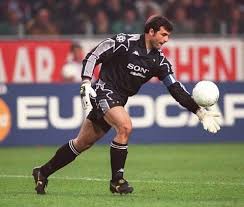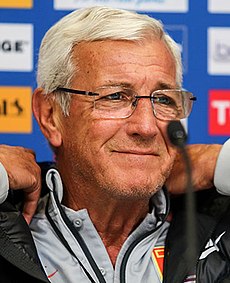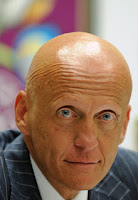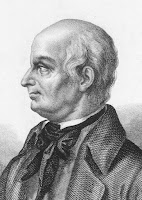Raffaele ‘Raf’ Vallone – actor
Movie star who had four careers
Raffaele Vallone, the stage and screen actor who was born on this day in 1916 in Tropea, Calabria, was remarkable for having embarked on three starkly different career paths even before he made his acting debut. Usually known as Raf, he grew up from the age of two in Turin, where his father, an ambitious young lawyer, had relocated to set up a legal practice. A natural athlete, he was a fine footballer – so good, in fact, that at the age of 14 he was snapped up by Torino FC, who made him an apprentice professional. Compared with the average working man, he was handsomely paid as a footballer, and he won a medal as part of the Torino team crowned Coppa Italia winners in 1936. Yet he quickly became bored with football and enrolled at Turin University, where he studied Law and Philosophy with a view to joining his father’s firm. Ultimately, he baulked at the idea of becoming a lawyer, too, and instead joined the staff of the left-wing daily newspaper L’Unità, where he rose quickly to be head of the culture pages, at the same time establishing himself as a drama and film critic for the Turin daily La Stampa. Read more…
________________________________________________________________
Giordano Bruno - 'martyr of science'
Dominican friar condemned as a heretic
Giordano Bruno, a Dominican friar, philosopher and cosmological theorist who challenged orthodox Christian beliefs in the 16th century, died on this day in 1600 when he was burned at the stake after being found guilty of heresy. The principal crimes for which he was tried by the Roman Inquisition were the denial of several core Catholic doctrines. Bruno challenged the divinity of Christ, the virginity of Mary, and the transubstantiation - the idea that Eucharistic offering of bread and wine in Mass becomes the body and blood of Christ. He also questioned the idea of God as a holy trinity of divine persons - the Father, the Son (Jesus) and the Holy Spirit. His own belief was closer to pantheism, which contends that a God is an all-encompassing divine presence rather than existing in some personal form with human traits. This idea formed part of his cosmological theory, in which he supported the idea that everything in the universe is made of tiny particles (atoms) and that God exists in all of these particles. Yet this was in contradiction of the established Catholic wisdom, as was his support for the idea advanced by the Renaissance astronomer Nicolaus Copernicus that Earth revolved around the sun, rather than the other way round. Read more…
_________________________________________________________________
Arcangelo Corelli – musician
Baroque composer had a major influence on the development of music
Violinist and composer Arcangelo Corelli was born on this day in 1653 at Fusignano, a small town near Ravenna. He is remembered for his influence on the development of violin style and for his use of the genres of sonata and concerto. Corelli’s 12 Concerti Grossi established the concerto grosso as a popular medium of composition. Named Arcangelo after his father, who died a few weeks before his birth, he studied music with the curate of a neighbouring village before going to the nearby towns of Faenza and Lugo to learn musical theory. Corelli later studied with Giovanni Benvenuti, who was a violinist at San Petronio in Bologna and in 1670 he started at the Philharmonic Academy in Bologna. He moved on to Rome where to begin with he played the violin at a theatre. It is known that by 1677 he had written his first composition, a Sonata for Violin and Lute. By 1675 Corelli was third violinist in the orchestra of the chapel of San Luigi dei Francesi and by the following year he had become second violinist.In 1681 his 12 Trio Sonatas for two violins and a cello were published and the following year he became first violinist in the San Luigi dei Francesi orchestra. Read more…
________________________________________________________________
Giovanni Pacini – opera composer
Works of overshadowed musician have enjoyed recent revival
Composer Giovanni Pacini, who wrote operas in the early part of the 19th century to suit the voices of the great singers of the period, was born on this day in 1796 in Catania in Sicily. Pacini began his formal music studies at the age of 12, when he was sent by his father, the opera singer Luigi Pacini, to study voice in Bologna with castrato singer and composer, Luigi Marchesi. He soon switched his focus to composing and wrote an opera, La sposa fedele - The Faithful Bride. It premiered in Venice in 1818 and, for its revival the following year, Pacini provided a new aria, to be sung specifically by the soprano Giuditta Pasta. By the mid 1820s he had become a leading opera composer, having produced many successful serious and comic works. Pacini’s 1824 work Alessandro nelle Indie - Alexander in the Indies - was a successful serious opera based on Andrea Leone Tottola’s updating of a text by librettist Pietro Metastasio. But by the mid 1830s, Pacini had withdrawn from operatic activity after he found his operas eclipsed by those of Gaetano Donizetti and Vincenzo Bellini. He settled in Tuscany, where his father had been born. Read more…
Home




























